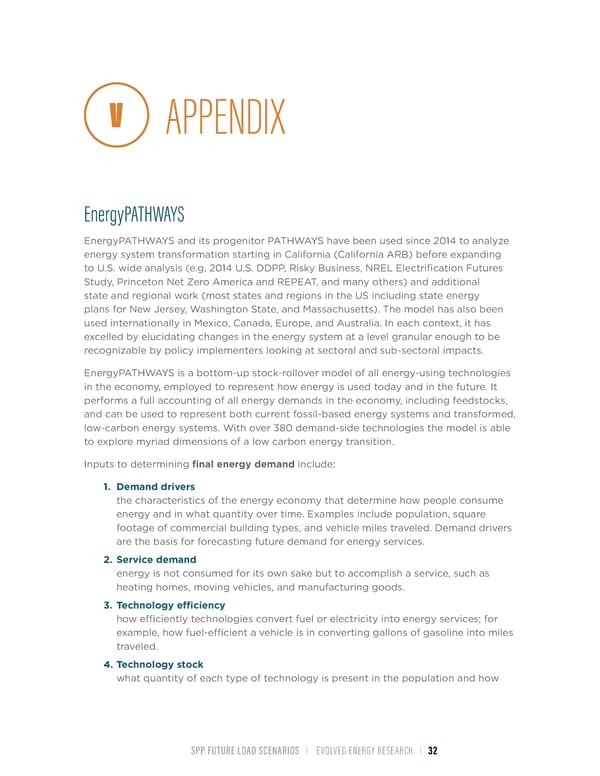V APPENDIX EnergyPATHWAYS EnergyPATHWAYS and its progenitor PATHWAYS have been used since 2014 to analyze energy system transformation starting in California (California ARB) before expanding to U.S. wide analysis (e.g, 2014 U.S. DDPP, Risky Business, NREL Electrification Futures Study, Princeton Net Zero America and REPEAT, and many others) and additional state and regional work (most states and regions in the US including state energy plans for New Jersey, Washington State, and Massachusetts). The model has also been used internationally in Mexico, Canada, Europe, and Australia. In each context, it has excelled by elucidating changes in the energy system at a level granular enough to be recognizable by policy implementers looking at sectoral and sub-sectoral impacts. EnergyPATHWAYS is a bottom-up stock-rollover model of all energy-using technologies in the economy, employed to represent how energy is used today and in the future. It performs a full accounting of all energy demands in the economy, including feedstocks, and can be used to represent both current fossil-based energy systems and transformed, low-carbon energy systems. With over 380 demand-side technologies the model is able to explore myriad dimensions of a low carbon energy transition. Inputs to determining final energy demand include: 1. Demand drivers the characteristics of the energy economy that determine how people consume energy and in what quantity over time. Examples include population, square footage of commercial building types, and vehicle miles traveled. Demand drivers are the basis for forecasting future demand for energy services. 2. Service demand energy is not consumed for its own sake but to accomplish a service, such as heating homes, moving vehicles, and manufacturing goods. 3. Technology efÏciency how efÏciently technologies convert fuel or electricity into energy services; for example, how fuel-efÏcient a vehicle is in converting gallons of gasoline into miles traveled. 4. Technology stock what quantity of each type of technology is present in the population and how SPP FUTURE LOAD SCENARIOS | EVOLVED ENERGY RESEARCH | 32
 Future Load Scenarios for Southwest Power Pool Page 33 Page 35
Future Load Scenarios for Southwest Power Pool Page 33 Page 35